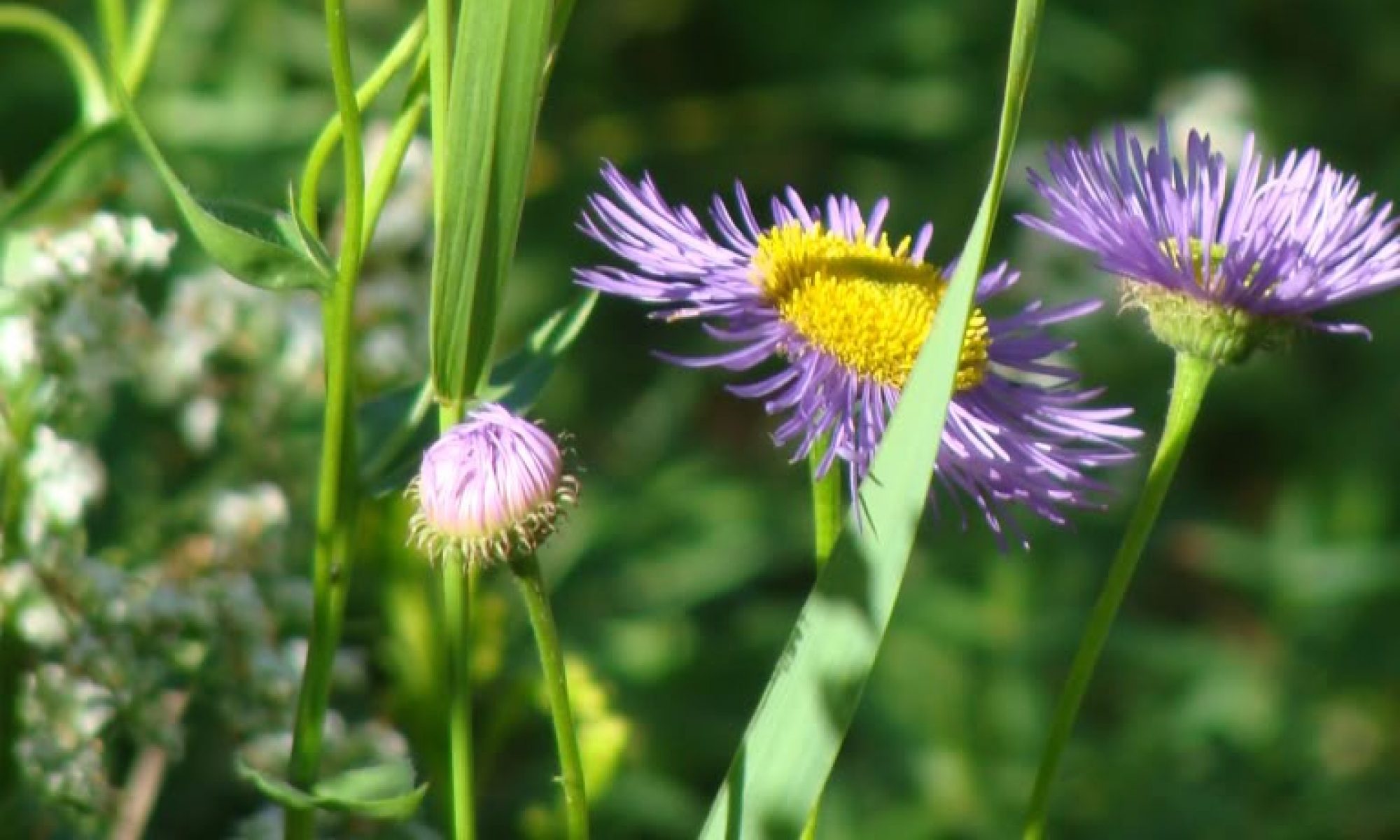I had posted earlier photos of the fireweeds at the former Sam’s Club parking lot.

About two weeks ago I was walking home through that parking lot and thought to stop and see if any seed pods were ripe. What I didn’t realize is that ripe fireweed seedpods burst open with cottony seeds. When I saw that, I grabbed a bunch of them and took them straight home. I put them on the top of a pot with fresh soil, thinking they might germinate next spring.
But look! I went in the greenhouse today and they are already sprouting like mad!
There are at least 30 little seedlings already! If I can keep these growing, I plan to plant a swath of them in the native plant garden. They are amazing! I also brought another big handful of seeds home today and spread them around the native plant garden. Well, I wanted to spread them, but I was holding all the seeds in one hand and when I got home I pretty much just had a big wad of cotton! I pulled it apart a bit and dropped it around, but I don’t hold out much hope that those seeds will have a chance.
I started a great new book on Kindle, called “The Humane Gardener: Nurturing a Backyard Habitat for Wildlife” by Nancy Lawson. You can find it on Amazon here.
Here are some passages that I like so far:
My heart was mostly in the right place, but my head was steeped in the marketing ploys of the Landscaping Industrial Complex, not to mention long-ingrained cultural sentiments that divide the world into endless false dichotomies: beneficial insects vs. “pests,” acceptable garden plants versus “weeds,” order versus chaos. Feeding a multi-billion-dollar industry hawking all manner of poisonous potions and outsized tools is a constant stream of cynical advertisements that prey on our insecurities and cater to our basest fears. From their warlike parlance, we learn that animals are out to get us, that plants are messy, that humans reluctant to unleash weapons of mass destruction on denizens of the natural world–especially insects–are freaks of nature themselves.
I hear you, Nancy Lawson. Too few people remind us, as you have, that beauty can be measured in a trillion ways, and what is beautiful for some of us is a garden that serves wildlife first and humans second. It might seem wild and messy, but it will be ALIVE! Truly ALIVE!
She goes on to say:
At a time when our fellow inhabitants of the earth increasingly depend on our mercy and ingenuity to survive, our default has instead been to kill and destroy. We live in an era where the artillery of choice is so accessible, the reaction to nature so thoughtless and automatic, that dying bumblebees now fall out of trees by the tens of thousands, poisoned by insecticides for the sake of aesthetics. One-third of native bumblebee species are imperiled, with at least one possibly already extinct. Monarch butterfly numbers in the eastern United States have plummeted by more than 90 percent in two decades. A third of all North American birds–432 species–are at risk of extinction and in need of urgent conservation action. Worldwide, populations of mammals, birds, reptiles, amphibians, and fish have declined by 52 percent. More than 40 percent of invertebrate pollinators, especially bees and butterflies, are in danger of vanishing from the planet, too.
And here is some good news:
Because our continent is vast and diverse, there’s no single prescription for creating habitat for wildlife. But the tenets of nurturing a humane backyard are universal, and learning to follow them is about unlearning and having the courage to question everything you thought you knew about gardening. In my own yard, I still make mistakes, usually when I’ve listened to a so-called expert instead of my own heart. My garden’s not perfect, and neither are the gardens of the people profiled in this book. But that’s part of the point. Perfection is a human construct, a poor substitute for the natural exuberance and resiliency that makes a house a home–not just for us, but for all species. The cavity-nesting bees would certainly be happier if we didn’t cut down dead stalks where they could lay their eggs, and the birds would approve if we didn’t scoop up the leaves and all the tasty seeds and insects hiding there. We don’t have to control everything, and we can’t anyway. So why not give nature a try?

One of my favorite insects, since I was a little kid, is the skipper butterfly. I remember twenty years ago my sister Cate grew a plant called Verbena rigida. When I planted some in my garden, it was like magic. Out of nowhere, skippers arrived for the very first time. And when those plants eventually died out, the skippers disappeared along with them. Now, in the memory garden, I have Verbena bonariensis, which seems attractive to pollinators, but I haven’t seen skippers on these plants. But I was out there on one sunny morning last week and one skipper made an appearance. I was on my way somewhere, so didn’t get the macro lens. The bug group on Facebook suggested I grow native grasses to increase skipper numbers in the yard, as the caterpillars feed on native grasses. I do have a bunch of native plants to set out in the native garden–hopefully, they will be attractive to these busy little bugs with the orangey-brown wings. Read more about Woodland Skippers here.


